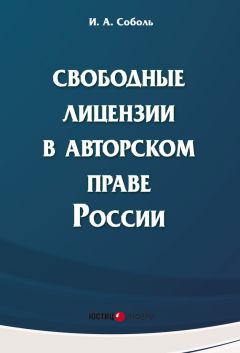Елена Беликова - Английский язык для медиков
На сайте mybooks.club вы можете бесплатно читать книги онлайн без регистрации, включая Елена Беликова - Английский язык для медиков. Жанр: Медицина издательство -,. Доступна полная версия книги с кратким содержанием для предварительного ознакомления, аннотацией (предисловием), рецензиями от других читателей и их экспертным мнением.
Кроме того, на сайте mybooks.club вы найдете множество новинок, которые стоит прочитать.

Елена Беликова - Английский язык для медиков краткое содержание
Английский язык для медиков читать онлайн бесплатно
Polychromatophilic erythroblast is the last cell in this line undergoes mitotic divisions. Its nucleus comprises approximately 50 % of its mass and contains condensed chroma—tin which appears in a «checkerboard» pattern. The po—lychnsia of the cytoplasm is due to the increased quantity of acidophilic hemoglobin combined with the basophilia of cytoplasmic polyribosomes.
Normoblast (orthochromatophilic erythroblast) is a cell with a small heterochromatic nucleus that comprises ap proximately 25 % of its mass. It contains acidophilic cytoplasm because the large amount of hemoglobin and degenerating organelles. The pyknotic nucleus, which is no longer capable of division, is extruded from the cell.
Reticulocyte (polychromatophilic erythrocyte) is an immature acidophilic denucleated RBC, which still contains some ribosomes and mitochondria involved in the synthesis of a small quantity of hemoglobin. Approximately 1 % of the circulating RBCs are reticulocytes.
Erythrocyte is the mature acidophilic and denucleated RBC. Erythrocytes remain in the circulation approximately 120 days and are then recycled by the spleen, liver, and bone marrow.
New words
reticular – сетчатый
sinusoids – синусоиды
granulocytes – гранулоциты
agranulocytes – агранулоциты
active – активный
yellow – желтый
glycoprotein – гликопротеин
erythropoietin – эритропоэтин
amount – количество
hemoglobin – гемоглобин
degenerating – дегенерирующие
condensed – сжатый
22. Hematopoietic tissue
Granulopoiesis, thrombopoiesis
Granulopoiesis is the process of granulocyte formation. Bone marrow stem cells differentiate into all three types of granulocytes.
Myeloblast is a cell that has a large spherical nucleus containing delicate euchromatin and several nucleoli. It has a basophilic cytoplasm and no granules. Myeloblasts divide differentiate to form smaller promyelocytes.
Promyelocyte is a cell that contains a large spherical indented nucleus with coarse condensed chromatin. The cytoplasm is basophilic and contains peripheral azurophi—lic granules.
Myelocyte is the last cell in this series capable of division. The nucleus becomes increasingly heterochromatic with subsequent divisions. Specific granules arise from the Golgi apparatus, resulting in neutrophilic, eosinophilic, and basophilic myelocytes.
Metamyelocyte is a cell whose indented nucleus exhibits lobe formation that is characteristic of the neutrophil, eos—inophil, or basophil. The cytoplasm contains azurophilic granules and increasing numbers of specific granules. This cell does not divide. Granulocytes are the definitive cells that enter the blood. Neutrophilic granulocytes exhibit an intermediate stage called the band neutrophil. This is the first cell of this series to appear in the peripheral blood.
It has a nucleus shaped like a curved rod or band.
Bands normally constitute 0,5–2 % of peripheral WBCs; they subsequently mature into definitive neutrophils.
Agranulopoiesis is the process of lymphocyte and mono—cyte for mation. Lymphocytes develop from bone marrow stem cells (lymphoblasts). Cells develop in bone marrow and seed the secondary lymphoid organs (e. g., tonsils, lymph nodes, spleen). Stem cells for T cells come from bone marrow, develop in the thymus and, subsequently, seed the secondary lym phoid organs.
Promonocytes differentiate from bone marrow stem cells (monoblasts) and multiply to give rise to monocytes.
Monocytes spend only a short period of time in the marrow before being released into the bloodstream.
Monocytes are transported in the blood but are also found in connective tissues, body cavities and organs.
Outside the blood vessel wall, they are transformed into macrophages of the mononuclear phagocyte system.
Thrombopoiesis, or the formation of platelets, occurs in the red bone marrow.
Megakaryoblast is a large basophilic cell that contains a U—shaped or ovoid nucleus with prominent nucleoli. It is the last cell that undergoes mitosis.
Megakaryocytes are the largest of bone marrow cells, with diameters of 50 mm or greater. They undergo 4–5 nuclear divi sions without concomitant cytopla—smic division. As a result, the megakaryocyte is a cell with polylobulated, polyploid nucleus and abundant granules in its cytoplasm. As megakaryocyte maturation proceeds, «curtains» of platelet demarcation vesicles form in the cytoplasm. These vesicles coalesce, become tubular, and eventually form platelet demarcation membranes. These membranes fuse to give rise to the membranes of the platelets.
A single megakaryocyte can shed (i. e., produce) up to 3,500 platelets.
New words
capable – способный
spherical – сферический
indented – зазубренный
chromatin – хроматин
23. Arteries
Arteries are classified according to their size, the appearance of their tunica media, or their major function.
Large elastic conducting arteries include the aorta and its large branches. Unstained, they appear yellow due to their high con tent of elastin.
The tunica intima is composed of endothelium and a thin sub jacent connective tissue layer. An internal elastic membrane marks the boundary between the intima and media.
The tunica media is extremely thick in large arteries and con sists of circularly organized, fenestrated sheets of elastic tissue with interspersed smooth muscle cells. These cells are responsi ble for producing elastin and other extracellular matrix com ponents. The outermost elastin sheet is considered as the external elastic membrane, which marks the boundary between the media and the tunica adventitia.
The tunica adventitia is a longitudinally oriented collection of collagenous bundles and delicate elastic fibers with associated fibroblasts. Large blood vessels have their own blood supply (vasa vasorum), which consists of small vessels that branch profusely in the walls of larger arteries and veins. Muscular distributing arteries are medium—sized vessels that are characterized by their predominance of circularly arranged smooth muscle cells in the media interspersed with a few elastin compo nents. Up to 40 layers of smooth muscle may occur. Both internal and external elastic limiting membranes are clearly demonstrated. The intima is thinner than that of the large arteries.
Arterioles are the smallest components of the arterial tree. Generally, any artery less than 0,5 mm in diameter is considered to be a small artery or arteriole. A suben—dothelial layer and the inter nal elastic membrane may be present in the largest of these vessels but are absent in the smaller ones. The media is composed of sev eral smooth muscle cell layers, and the adventitia is poorly devel oped. An external elastic membrane is absent.
New words
endothelium – эндотелий
media – средняя
arteries – артерии
to be classified – классифицированный
according – соответственно
their – их
size – размер
appearance – вид
tunica – оболочка
major – главный
elastic – эластичный
conducting – проведение
arteries – артерии
to include – включать
aorta – аорта
branches – ветви
up to – до
layers – слои
smooth – гладкий
may – может
infima – внутренняя полость артерии
24. Capillaries
Capillaries are thin—walled, narrow—diameter, low—pressure vessels that generally permit easy diffusion across their walls. Most capillar ies have a cross—sectional diameter of 7 —12 mm. They are composed of a simple layer of endothelium, which is the lining of the entire vas cular system, and an underlying basal lamina. They are attached to the surrounding tissues by a delicate reticu—lum of collagen. Associated with these vessels at various points along their length are specialized cells called pe—ricytes. These cells, enclosed within their own basal lamina, which is continuous with that of the endothelium, contain contractile proteins and thus may be involved in the control of capillary dynamics. They may also serve as stem cells at times of vascular repair. Capillaries are generally divided into three types, according to the structure of their endothelial cell walls.
Continuous (muscular, somatic) capillaries are formed by a single uninterrupted layer of endothelial cells rolled up into the shape of a tube and can be found in locations such as connective tissue, muscle, and nerve.
Fenestrated (visceral) capillaries are characterized by the presence of pores in the endothelial cell wall. The pores are covered by a thin diaphragm (except in the glome—ruli of the kidney) and are usually encountered in tissues where rapid substance interchange occurs (e. g., kidney, intestine, endocrine glands).
Sinusoidal capillaries can be found in the liver, hemato—poietic and lymphopoietic organs, and in certain endocrine glands. These tubes with discontinuous endothelial walls have a larger diame ter than other capillaries (up to 40 mm), exhibit irregular cross—sec tional profiles, have more tortuous paths, and often lack a con tinuous basal lamina. Cells with phagocytic activity (macropha—ges) are present within, or just subjacent to, the en—dothelium.
New words
capillaries – капилляры
to thin—walled – окруженный тонкой стеной
narrow—diameter – узкий диаметр
low—pressure – низкое давление
that – тот
generally – главным образом
permit – разрешение easy – легкий
diffusion – распространение
cross—sectional – поперечный
to be composed – быть сложным
simple – простой
endothelium – эндотелий
lining – выравнивание
entire – весь
vas cular – сосудистый
underlying – лежащий в основе
basal – основной
lamina – тонкая пластинка
25. Veins
Veins are low—pressure vessels that have larger lumina and thinner walls than arteries. In general, veins have more collagenous connec tive tissue and less muscle and elastic tissue than their arterial coun terparts. Although the walls of veins usually exhibit the three layers, they are much less distinct than those of the arter ies. Unlike arteries, veins contain one—way valves composed of exten sions of the intima that prevent reflux of blood away from the heart. Veins can be divided into small veins or venules, medium veins, and large veins.
Venules are the smallest veins, ranging in diameter from approxi mately 15–20 mm (post—capillary venules) up to 1–2 mm (small veins). The walls of the smaller of these are structurally and func tionally like those of the capillaries; they consist of an endothelium surrounded by delicate collagen fibers and some pericytes. In those vessels of increased diameter, circularly arranged smooth muscle cells occur surrounding the intima layer, but unlike in the small arteries, these cells are loosely woven and widely spaced. Venules are important in inflammation because their endothelial cells are sensitive to hista—mine released by local mast cells. This causes endotheli—al cells to contract and separate from each other, exposing a naked basement membrane. Neutrophils stick to the exposed collagen and extravasate (i. e., move out into the connective tissue). Histamine also causes local arterioles to relax, affect ing a rise in venous pressure and increased leaking of fluid. This produces the classic signs of inflammation: redness, heat, and swelling.
Medium veins in the range of 1–9 mm in diameter have a well – developed intima, a media consisting of connective tissue and loosely organized smooth muscle, and an adventitia (usually the thickest layer) composed of collagen bundles, elastic fibers, and smooth muscle cells oriented along the longitudinal axis of the vessel. Venous valves are sheet—like outfoldings of endothelium and underlying connective tissue that form flaps to permit uni—di rectional flow of blood.
Large veins, such as the external iliac, hepatic portal, and vena cavae, are the major conduits of return toward the heart. The intima is similar to that of medium veins. Although a network of elastic fibers may occur at the boundary between the intima andmedia, a typical internal elastic membrane as seen in arteries is not present. A tunica media may or may not be present. If pre sent, smooth muscle cells are most often circularly arranged. The ad—ventitia is the thickest layer of the wall and consists of elastic fibers and longitudinal bundles of collagen. In the vena cava, this layer also contains well—developed bundles of longitudinally oriented smooth muscle.
New words
vein – вена
low—pressure – низкое давление
collagenous – коллагеновый
intima – интима
reflux – рефлюкс
inflammation – воспаление
longitudinal – продольный
flaps – створки
iliac – подвздошный
hepatic – печеночный
26. Heart
The heart is a muscular organ, composed primarily of cardiac muscle tissue, which contracts rhythmically to pump blood throughout the body. Structure of the heart wall: the walls of the heart are constructed in layers that are similar to those of the major blood vessels.
Endocardium is the innermost layer of the heart and is lined with endothelium. Veins, nerves, and components of the impulse conduc—ting system are present in the suben—docardial connective tissue layer.
Myocardium is composed of branching, anastomotic cardiac myocytes attached to one another by intercalated disks. Most of these cells are involved in the pumping function of the heart; others are specialized for the control of rhythmicity (impulse conducting system) or secretion (myocardial endocrine cells).
Epicardium is a serous membrane that forms the visceral lining of the pericardium. Its external mesothelium is supported by a loose connective tissue subepicardial layer.
Cardiac skeleton is composed mainly of dense connective tissue and consists of the annuli fibrosi, the trigonum fibrosum, and the septum membranaceum.
Cardiac valves are composed of dense fibrous tissue covered by endothelium. Unidirectional flow is maintained from the.
Right atrium to the right ventricle (tricuspid valve).
Right ventricle to the pulmonary artery (pulmonic semilunar valve). Left atrium to the left ventricle (mitral/bicuspid valve).
Left ventricle to the aorta (aortic semilunar valve).
Tricuspid and mitral valves are attached to papillary muscles by cords of fibrous connective tissue (chordae tendineae) and prevent reflux of blood into the atria during 26б ventricular con traction (systole). Semilunar valves (aortic and pulmonic) prevent reflux of blood back into the ventricles during ventricular relaxation (diastole).
Похожие книги на "Английский язык для медиков", Елена Беликова
Елена Беликова читать все книги автора по порядку
Елена Беликова - все книги автора в одном месте читать по порядку полные версии на сайте онлайн библиотеки mybooks.club.




![Rick Page - Make Winning a Habit [с таблицами]](https://cdn.my-library.info/books/no-image-mybooks-club.jpg)